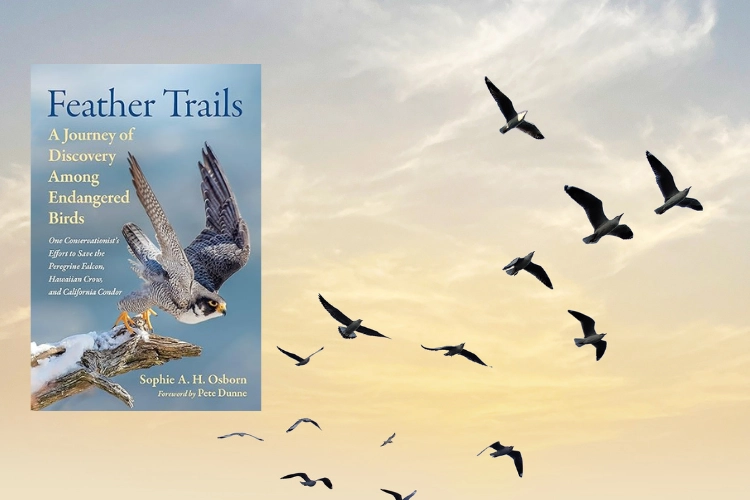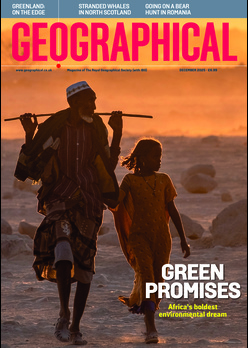
Sophie A H Osborn documents her experiences and challenges in helping endangered birds across the world in latest book
By Elizabeth Wainwright
A chance sighting of the crossbow shape of a peregrine falcon soaring over a lake in Vermont set the course of Sophie A H Osborn’s life. ‘The falcon epitomised the soul-stirring beauty of birds and hinted at their surprising fragility. And it came to mark my entry into the endlessly captivating avian world – a journey that became a lifelong odyssey…’
Feather Trails, then, is part memoir – the story of an award-winning environmental author and wildlife biologist whose work has included the study and conservation of multiple bird species in the Americas – and part an account of what it takes to save three species whose populations have been decimated by an increasingly inhospitable environment.
Osborn introduces readers to endangered peregrine falcons, Hawaiian crows and California condors, and their precarious lives in the Rocky Mountains, the cloud forests of Hawaii and the Grand Canyon. She and her colleagues work devotedly to reintroduce these birds to the wild – even when the odds are stacked against them.
Feather Trails is both a deeply researched environmental investigation and a personal journey – Osborn must overcome her own obstacles (including heat exhaustion, poachers, rattlesnakes and chauvinism) in order to help these endangered birds overcome theirs. Readers may find parts of their own lives reflected in this search for purpose. Osborn’s work is hard but full of wonder; heartbreaking but with signs of hope. She tells how ‘birds have given me something more: stories’
– stories of enchantment and sadness, of struggle and survival. And stories, too, of the future: avian messengers are alerting us to a warming climate, habitat loss, toxic air and water, and more.
Conservation biologist Thomas Lovejoy once said, ‘If you take care of birds, you take care of most of the environmental problems in the world.’ The choices we make – about pesticide use, habitat destruction and others – will affect the future of these birds but also of us. In its particularity, Feather Trails points to the universal – to the fact we’re all part of a web of life that in places is unravelling. Osborn’s work shows the dedication, community and care needed to re-weave that web, inspiring hope for a more sustainable future for both birds and people.




